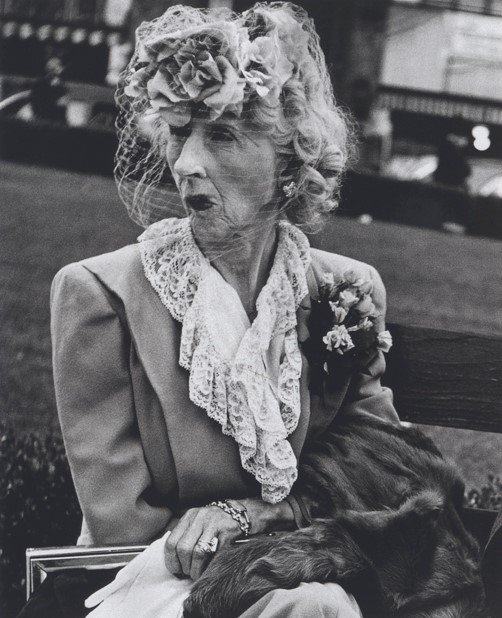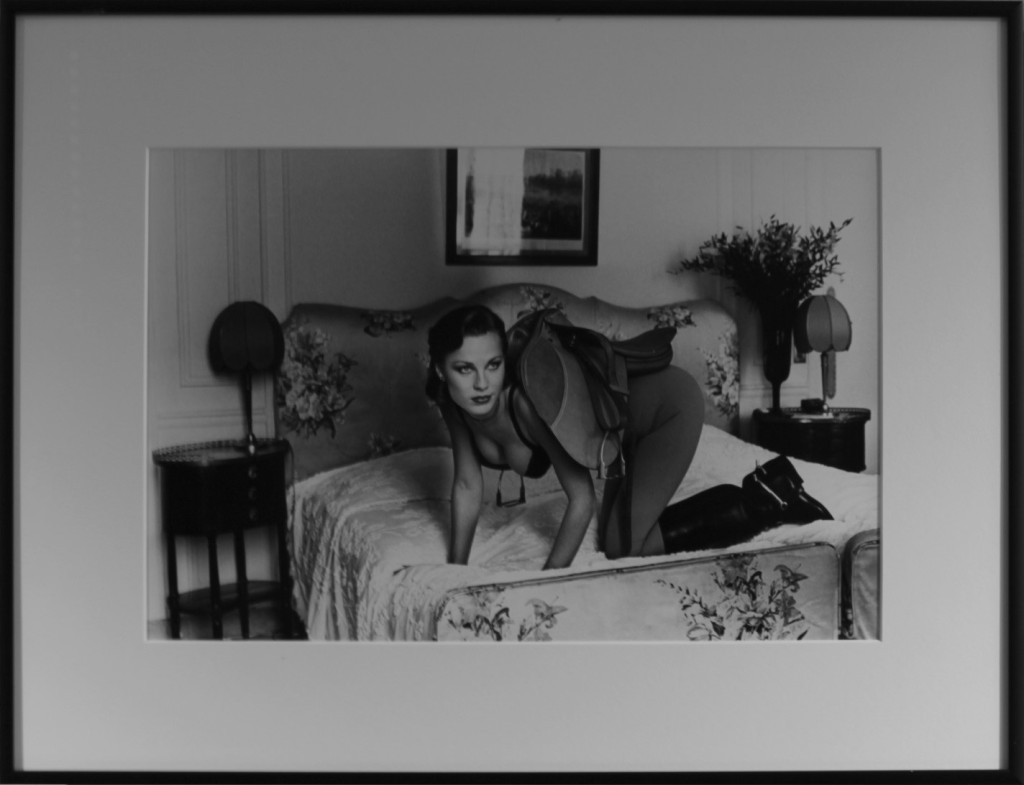“When I look at a great picture, it feels like the beginning or the end of a movie.”
JP Managing Director Daniel Jelitzka is a passionate collector of photography. With viennacontemporary, he talks about his love for portraits, his rules when it comes to collecting, and why he and his sons had to undress for photographer Mona Kuhn.

L. Model_Woman with Veil
Kristina Kulakova: You collect mostly photography. Loving photography is not unusual but most people visit galleries and museums to see it. Why do feel like you have to own and collect it?
Daniel Jelitzka: Well, it all started in 2005. I have been interested in photography my entire life. Back then I made quite a good business deal and decided to dedicate a part of it to art. For me, the art of photography is very accessible in terms of understanding and in terms of getting a feeling for it. A second reason is that collecting photography is very young. Photography as art developed as late as 1945. As it is a very young art form, I thought it would be easy to get a quick nice overview and I would understand it faster than if I was collecting old masters.
And how did this work out for you?
I was completely wrong. It’s not easier at all. Actually, there are so many photographers – and so many good ones. For me, the great thing about photography is: You cannot redo a picture. You can copy any painting in exactly the same way it was done but you cannot do it with a great shot. It’s a once in your lifetime moment. To answer your question as to why I want to own photography… I want to be able to take a look at it whenever I feel like it. When I look at a great picture, it feels like the beginning or the end of a movie. Sometimes I look at one of my pictures for hours and the movie action unfolds in front of my eyes. I ask myself what happened before or after the scene on the photograph – it’s my personal method of relaxation.
Do you follow any rules when it comes to collecting?
There are always three things I keep in mind. Firstly, I want a motive that attracts me. Secondly, I want an artist that is already known – if possible. And thirdly, it has to be at a reasonable price. These are my three pillars of collecting.
Why is it important that the artists are well-known?
I’m an entrepreneur and market value is always in the back of my mind but it is not that important. In reality, one of the three points is always missing – it’s always a compromise. As a consequence, I also collect a lot of young artists. I hire one young photo artist every year to do a portrait of my family. I give him or her a carte blanche to do it exactly in his or her own way.
What was your most unexpected approach to a family portrait?
Once we had Mona Kuhn, a very famous photographer from L.A, who does a lot of international campaigns. She had a show in Vienna and I got in touch with her and she said okay let’s do it. She came to my apartment, saw my family – I’ve got three boys – and said: “Okay, I want to see your bodies”. My three boys and I had to take off our shirts and she took a picture of the four of us standing next to each other and photographed my wife – she was dressed – through a mirror. This resulted in a double image. I never know what the result will be like.
While you are very open in your family portraits, you follow a strict concept in your collection.
Yes, I do. I strongly believe that a good collection is stronger than the individual pictures. My collection starts in 1945 and I focus on the photography of humans – portraits and people on pictures. Photographers like Anselm Adams, who mainly did landscape photography, are not as close to my heart.
Why do you collect only pictures with humans on them?
Because people are interesting. I love to watch people, also in real life. It’s kind of my business to analyze people. I do real-estate business and this is people’s business.
From someone who has never met you, what do you think they could tell about you by only seeing your collection?
I think it would tell them that I obviously love people and that I am very open-minded concerning colour, sexual orientation…all that. I really do have some pictures that are quite out of the ordinary. They could also tell that I really love Art Brut and Viennese Actionism. I have a huge stock of vintage photographs from that time.
 H. Newton_Saddle I
H. Newton_Saddle I
Viennese Actionism was a very strong movement in Austrian art history and is not that well known internationally yet. What makes it so relevant in your opinion?People are just starting to understand Viennese Actionism. It is a very difficult and not very accessible form of art. It happened during the 60’s and 70’s and has had a very strong impact on the development of the art scene until today. You can call it a kind of French revolution of the art world. In Asia, there was a small group of people doing the same thing but they did not get through with their message. With Vienna Actionism, as the name tells, things happened. If you talk about certain happenings like “Der Geile Wotan” or happenings with Schwarzkogler or Nitsch, it’s really amazing to think of what they did back then. The police chased them so they had to flee to Germany. The wife of Schwarzkogler – or was it Brus, I don’t remember now – wrote to Kirchschlager, the Austrian president at the time, who agreed to meet her at the Hofburg and later pardoned them all. With the eyewitnesses of that time like Vali Export, Günter Brus, Hermann Nitsch, and Otto Mühl, it’s a matter of time how long you can still talk to them. At one point, the vintage photographs will be the only witnesses and documentations of what happened.
Why do you think that out of all of these places that this art movement succeeded in Vienna?
For a long time, Vienna was a sleepy city, it was all grey and nothing happened. And these famous artists started to meet in the Perinet-basement…it was just a few secret happenings but everybody knew it. They all had the feeling that something was happening in Vienna.
What do you think stops Vienna from being the centre of attention today?
We have great places like Secession, Albertina, and Kunsthalle but in my opinion today’s Vienna is too slick. It’s too perfect. It’s not the place to be creative. If you go to edgy places like Berlin, Shanghai or London, you get more inspiration. If you ask what Vienna stands for, the answer is “tourism, tourism, and tourism”. After that: Mozart, Sacher Torte, Fiaker. Of course, there is a lot going on in Vienna but you have to really look for people who collect art or who make art. If you find them, it’s great. Most of them have worked abroad for a long time but everyone comes back. Vienna is the place to live. It’s the center of Europe and you learn to value the great quality of life.
It is fascinating that Vienna is kind of a small city but has such a great density of high-quality printing and independent projects dedicated to photography.
Definitely. Johannes Faber, Ostlicht, Westlicht, Bettina Leitl of Kunsthaus Wien, Felix Leutner – these are all people and institutions with a lot of passion and knowledge and they try to do a lot for photography. We have amazing photographers. Wolfgang Zeitsch is one of them. He lives in Los Angeles now and changed his last name to Zack because it’s easier. In my opinion, he’s got at least the same oeuvre as Jurgen Teller. A few years ago he did some photographs for the Guesthouse Vienna, one of our hotels. It was supposed to be done by Johannes Conrad originally, whowanted to put some nice pictures on the wall, the sort that goes with the pillows on the sofa. I said no, I want to have a statement, I want to have art, so I begged Wolfgang to do it and he made his pictures for almost nothing simply because he wanted to do them. Now he works in Los Angeles and has the biggest clients like Pepsi Cola, Nike, and many more. His daily fee is incredible but he also still does his art photography. He did not change his art. He just changed his location. He is a great example that if you stick to the things you want to do, you can make it. Austria is too small to succeed in that. This is also one of the reasons for why the prices of photography in Vienna are still so reasonable.
If a photographer also works commercially, do you think it affects the quality of his or her art?
There is almost no photographer who only does art photography. Most of them need to work commercially to survive. Even Helmut Newton did commercial stuff. I think good photographers can combine the artistic and the commercial side of photography.
One last question: What is your favourite book on photography?
I like the autobiography of David Hamilton very much because it’s funny, surprising and pretty honest.
What makes a good photograph?
For me, photography is young contemporary art with considerable potential. It is easily accessible and understandable. Good photography has a lot to do with good stories for me. A good photo allows my gaze to pause and invites me to continue its captured static moment as the beginning (or end) of a story. What happened before or what happened after that? Every good picture is also the starting point of my story, a story that I discover for myself and can tell. For me, seeing a good photograph also means traveling in my head.

Dr. Daniel Jelitzka, Managing Director of JP Immobilien
Follow us on
Facebook: Vienna Contemporary
Instagram: @viennacontemporary
Save the Date
viennacontemporary
26–29 September 2019
Marx Halle Vienna
www.viennacontemporary.at
